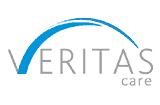Elderly Loneliness in Care Homes vs. Live-in Care
Loneliness is not only an unpleasant emotional experience but a serious threat to health and life, especially in the case of elderly loneliness. Persistent feelings of loneliness can lead to mental disorders and social isolation. Therefore, today we compare how isolation in care homes is experienced versus seniors with live-in care, and we suggest how to alleviate this challenging sentiment among seniors. How to deal with elderly loneliness? What is better isolation in care homes or life with live-in care? We will try to find answers to these pressing questions.
Elderly loneliness – why is it a problem?
Elderly loneliness is certainly an unpleasant feeling, but is it that common and destructive? What do the UK elderly loneliness statistics say? According to a report carried out by Age UK and NHS data, more than 2 million seniors in the UK over 75 live alone and more than 1 million of them claim not to have spoken to a friend or family member for more than a month– here are UK elderly loneliness statistics. These are frightening figures
But does loneliness in the elderly harm their health? It is estimated that social isolation can be a major risk factor for premature death. Some consider it more dangerous than known factors such as poor diet or lack of physical activity. The same is true for Alzheimer’s disease! Loneliness significantly increases its probability and accelerates its development. Therefore, loneliness in the elderly can have very dire consequences, both for the psyche and the body of seniors.
Isolation in care homes vs. live-in care
Elderly people undoubtedly need help, often with their everyday responsibilities. But how does living in a care home relate to elderly loneliness? Do people with live-in care experience it differently? Numerous studies show that, despite living in a community, older people feel lonelier and more isolated in care homes than they do in live-in care. But statistics alone are of little use if we want to get to the bottom of this, so let’s take a closer look.
Elderly loneliness in a care home
Moving into a care home usually comes as a considerable shock to the elderly person. This is when the senior has to completely change their surroundings, habits, environment, community and home. It must be admitted that this is quite a lot to bear at once.
According to data presented by a team of researchers from the University of Bedfordshire, more than 80% of senior nursing home residents admitted to experiencing loneliness in nursing homes. They also mention that this situation could be alleviated if personnel could spend more time with them. Many patients appreciate the company of care home staff, but the workers acknowledge that working hours do not allow them to build relationships with residents.
On the surface, it would seem that the feeling of isolation in care homes should be less, if only because of the number of people involved. However, it must be acknowledged that older people interact less well with people and establish new relationships. The fact that a senior citizen lives in a care home also makes it much more difficult for their relatives and friends, who are often also elderly, to visit seniors in care homes. For these reasons, loneliness in the elderly living in nursing homes is extremely dangerous, especially at the beginning of the stay.
Elderly loneliness and the employment of live-in care
Employment of live-in care for the elderly has great potential in mitigating elderly loneliness as it allows seniors to build a strong and close relationship with their caregivers and does not require separating the elderly person from their familiar environment. Seniors can still go to their favourite coffee shop and gossip with their neighbours, so they don’t feel that there has been a significant big change in their lives.
Caregivers for the elderly also only have one client on whom they focus all their attention, so they can talk, do interesting activities and accompany the elderly which is not possible in nursing homes. For this reason, live-in care means far less risk of feeling isolated and elderly loneliness.
Elderly loneliness – how to deal with it?
We have established that the first step in mitigating loneliness in the elderly is to provide seniors with appropriate assistance such as live-in care. In this way, seniors gain a faithful companion, confidant and helper all in one. How else can you combat elderly loneliness? Nowadays, there is a multitude of options, and it is advisable to adapt them to the senior’s disposition and level of activity. Libraries and assistance centres host many evenings and events for seniors, and cinemas often organise screenings and excursions for older people.
Seniors can also sign up for special courses, for example in computer skills, which can have a double benefit: the senior can socialise via the Internet and meet new people during the course. However, the most important thing is time spent with loved ones, so don’t forget about the older people in your life and try to make time for them because love and attention is the best way to overcome elderly loneliness.














